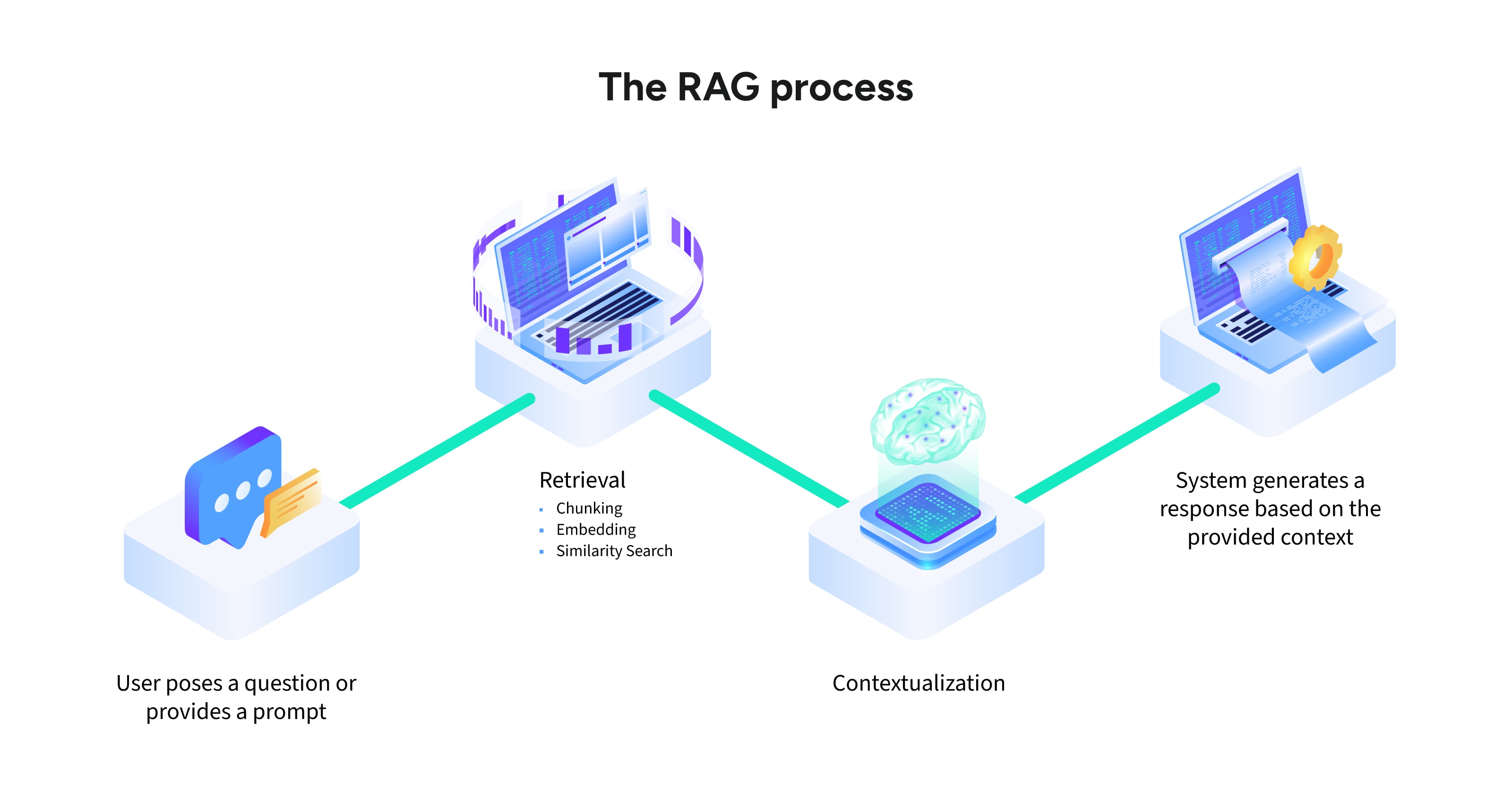Business benefits of retrieval-augmented generation
Retrieval-augmented generation redefines how businesses harness information, merging AI capabilities with authoritative data to drive accuracy and innovation
Retrieval-augmented generation redefines how businesses harness information, merging AI capabilities with authoritative data to drive accuracy and innovation

Retrieval-augmented generation (RAG) is an AI methodology that combines the language understanding capabilities of large language models (LLMs) with real-time, external data retrieval. This approach enhances the accuracy, relevance, and contextual understanding of AI-generated responses by grounding them in updated, authoritative knowledge sources.

You can overcome the challenges of managing unstructured data and turn it into actionable insights with AI. Read this groundbreaking white paper from analyst firm Intelligent Business Solutions to explore the newest innovations in content management. Download your copy now and take the first step toward transforming fragmented data into a strategic advantage with Hyland.
Traditional LLMs rely solely on their static training data, which can result in outdated or inaccurate outputs. RAG addresses this limitation by dynamically pulling relevant information from external knowledge bases, ensuring responses are consistent, grounded, and trustworthy. Designed to meet the demands of modern enterprises, RAG leverages AI to deliver more reliable business outcomes.

RAG operates through a well-structured process that ensures generative models provide detailed, accurate, and informed responses. Below are the key steps in a RAG framework:
The process begins when a user submits a query or prompt. This input is analyzed and converted into a machine-readable embedding, a numerical representation of the text.
The system identifies and retrieves relevant information from external sources such as databases, APIs, or document repositories. This step includes:
Relevant data retrieved from external sources is appended to the original query to create a comprehensive, augmented prompt. This ensures the LLM has sufficient context to generate its response.
The LLM processes the enriched prompt to generate a response that incorporates both the retrieved data and its pre-trained knowledge. This balanced approach ensures that outputs are specific, accurate, and relevant.
The response is presented to the user, often with references or links to the sources used. This transparency builds trust and provides users with deeper insights.
Building a robust RAG system requires advanced tools and technologies, which include:
These tools empower organizations to implement scalable solutions that deliver real-time, context-aware results.

In a recent survey conducted by Forrester Consulting and commissioned by Hyland, Forrester presented findings that underscore the importance of harnessing the power of enterprise content and unstructured data.
Explore their findings, which include insights on which content intelligence capabilities are ripe to flourish.
RAG presents several advantages that elevate its effectiveness for businesses and enterprises alike:
Grounding LLM responses with vetted external knowledge ensures higher levels of factual consistency and reduces misinformation.
RAG enables access to current, real-world information, avoiding the stagnation that occurs with outdated LLM training data.
Unlike traditional retraining processes for AI models, RAG dynamically incorporates updated and relevant information without the need for costly fine-tuning.
RAG supports custom integrations with industry-specific knowledge bases, enabling precise and reliable outputs tailored to niche fields like healthcare, finance, and legal industries. One of the main advantages of RAG over LLMs is the ability to retrieve knowledge from private repositories that LLMs aren’t trained on. This allows for greater precision in its responses.
RAG’s adaptability makes it highly valuable across industries and use cases. Here are some examples:
RAG-powered AI chatbots provide highly personalized answers by leveraging internal policies, FAQs, and case-specific data. They minimize wait times and enhance user satisfaction.
Read more | The power of AI in customer service
RAG supports analysts by providing real-time updates on market conditions, regulatory changes, and portfolio performance metrics. It enables them to respond more strategically in volatile markets.
Read more | Revolutionizing financial services: The impact of artificial intelligence
From summarizing lengthy documents to creating fact-based reports, RAG facilitates efficient and accurate content generation, enabling teams to focus on higher-order tasks.
Enterprise RAG systems assist staff with answers to HR questions, compliance guidelines, and training materials. This creates a self-sufficient workforce and reduces administrative overhead.
While RAG unlocks new possibilities, it comes with challenges that require deliberate strategies to overcome:
Selecting authoritative knowledge sources is critical. Poor-quality data can significantly reduce the utility and reliability of responses.
Implementing RAG systems often requires expertise in machine learning, semantic search, and prompt engineering, especially for large-scale deployments.
Maintaining up-to-date knowledge bases and embedding vectors is essential to ensure responses are always accurate and reflect the latest information.
RAG reduces instances of AI “hallucinations” (incorrect or fabricated facts), ensuring accuracy during the generation phase remains an ongoing area of optimization. It does this by implementing guardrails to remove more biases, off-topic information and mitigate any potential toxicity.
Knowledge Discovery transforms how you access and use enterprise information. With AI-powered search and natural language queries, you can quickly find and verify vital data, minimizing search time and enabling faster, more informed decisions.
Eliminate silos, accelerate workflows, and make smarter decisions with Knowledge Discovery. Explore how our solutions can revolutionize your organization today.